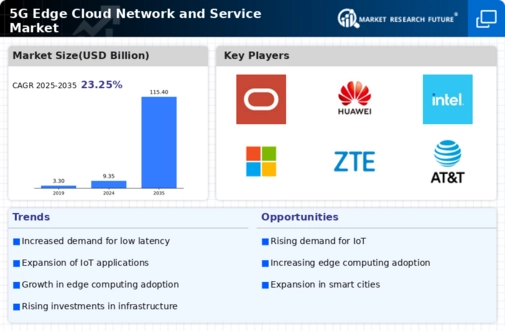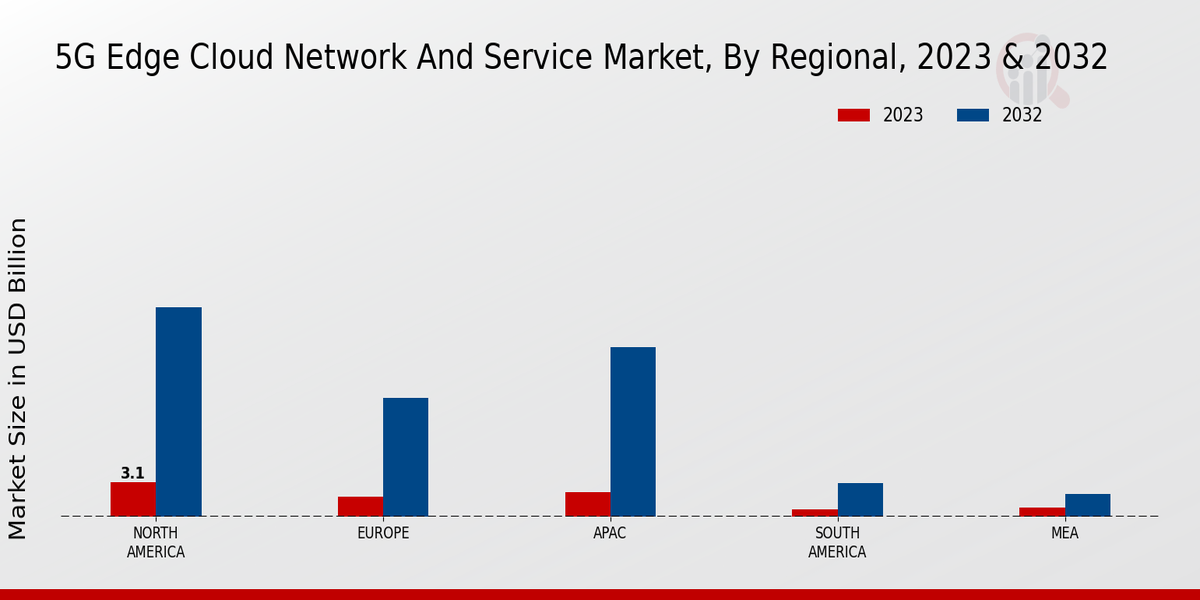Expansion of Smart Cities Initiatives
The development of smart cities is a pivotal driver for the 5G Edge Cloud Network and Service Market. As urban areas increasingly adopt smart technologies, the need for robust and efficient communication networks becomes paramount. Smart city initiatives encompass a wide range of applications, including traffic management, waste management, and public safety systems, all of which require real-time data processing and analytics. The integration of 5G edge cloud services facilitates the deployment of these applications, enabling cities to operate more efficiently and sustainably. Reports suggest that investments in smart city projects are expected to exceed several billion dollars in the next few years, further propelling the demand for 5G edge solutions. This trend underscores the critical role of the 5G Edge Cloud Network and Service Market in shaping the future of urban living.
Increased Focus on Remote Work Solutions
The shift towards remote work has catalyzed the growth of the 5G Edge Cloud Network and Service Market. Organizations are increasingly adopting cloud-based solutions to support remote collaboration and productivity. The need for high-speed internet and reliable connectivity has never been more pronounced, as employees require seamless access to applications and data from various locations. The 5G Edge Cloud Network offers enhanced bandwidth and reduced latency, making it an attractive option for businesses looking to optimize their remote work infrastructure. Market analysis indicates that the demand for remote work solutions is likely to continue its upward trajectory, with a significant portion of the workforce expected to remain remote or hybrid. This evolving work landscape positions the 5G Edge Cloud Network and Service Market as a crucial enabler of modern business operations.
Rising Demand for Low Latency Applications
The 5G Edge Cloud Network and Service Market is experiencing a notable surge in demand for low latency applications. Industries such as gaming, autonomous vehicles, and augmented reality require instantaneous data processing and minimal delay. This demand is driven by the increasing reliance on real-time data analytics and the need for seamless user experiences. According to recent estimates, the market for low latency applications is projected to grow at a compound annual growth rate of over 30% in the coming years. As organizations seek to leverage the capabilities of 5G technology, the integration of edge computing becomes essential, allowing for faster data processing closer to the source. This trend indicates a significant shift in how applications are developed and deployed, positioning the 5G Edge Cloud Network and Service Market at the forefront of technological innovation.
Emergence of 5G-Enabled Industry 4.0 Solutions
The advent of Industry 4.0 is significantly influencing the 5G Edge Cloud Network and Service Market. As industries embrace automation, IoT, and data analytics, the demand for 5G-enabled solutions is escalating. These technologies facilitate real-time monitoring, predictive maintenance, and enhanced supply chain management, all of which are essential for modern manufacturing and industrial operations. The 5G Edge Cloud Network provides the necessary infrastructure to support these applications, ensuring high-speed connectivity and low latency. Market forecasts indicate that the Industry 4.0 sector could reach a valuation of over 200 billion dollars by 2025, underscoring the potential for growth within the 5G Edge Cloud Network and Service Market. This trend highlights the transformative impact of 5G technology on traditional industries, paving the way for smarter and more efficient operations.
Advancements in Artificial Intelligence and Machine Learning
The integration of artificial intelligence (AI) and machine learning (ML) technologies is driving innovation within the 5G Edge Cloud Network and Service Market. These technologies require substantial computational power and low latency to function effectively, making edge computing an ideal solution. By processing data closer to the source, organizations can leverage AI and ML algorithms to gain insights and make data-driven decisions in real-time. The market for AI and ML applications is projected to grow exponentially, with estimates suggesting a potential market size of over 500 billion dollars by 2025. This growth is likely to enhance the capabilities of the 5G Edge Cloud Network and Service Market, as businesses seek to harness the power of intelligent systems to improve operational efficiency and customer experiences.


















Leave a Comment